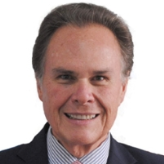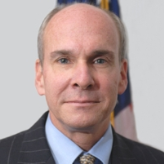Peru
Famous for its touristic richness and gastronomic variety, Peru is located on the west coast of South America In 1542, The Spanish conquerors colonized the vast and rich Inca Empire, known for its sophisticated system of social organization and mystical thought. The “conquistadores” named this region “Peru.” Under the motto of “God, Gold and Glory,” the Spanish crown made Peru the center of its viceroyalty in order to control the appropriation of natural resources. More than 200 years later, the first chants of independence were pronounced by José de San Martín in 1821 and later by Simón Bolivar in 1824 during the final battle of Ayacucho. For a time, territorial disputes with Peru’s neighbors tested the country’s independence and paved the way for a series of military dictatorships from 1948 to 1979. Many of these were influenced by ideals related to the Cuban revolution and also some are known to have been connected to the CIA . Although several rulers tried to re-establish Peru’s faltering economy during the 1960s and 1970s, it wasn’t until the emergence of the terrorist group, Sendero Luminoso (Shining Path), in rural areas in 1980, and the Tupac Amaru Revolutionary Movement (MRTA) in Lima, that mathematician-turned-politician Alberto Fujimori was elected president in 1990. Under Fujimori, inflation fell dramatically, but human rights abuses abounded. In November 2000, Fujimori fled to Japan amidst charges of political and economic mismanagement. In June 2006, Alan García Pérez was elected to the presidency, and has begun to turn the country’s economy around. Probably his biggest step toward relations with the United States has been the signing of the Free Trade Agreement between the two countries..
Lay of the Land
: Peru occupies the southern portion of the “bulge” on the west coast of South America. A land of truly striking geographical contrasts, Peru’s coastal desert strip terminates abruptly in the great mountain range of the Andes, which divides the country in half from north to South. East of the Andes is the montaña, covering about half of Peru’s entire territory. The Andes are at their most spectacular in Peru, with 20,000-foot peaks and high, windswept plateaus. The altiplano of the southern Peruvian Andes is the largest single such plateaus – a high, cold barren region about 5,000 square miles in area, inhabited by Indians who farm potatoes and herd llama as their ancestors have done for generations. Other mountain valleys, notably the Mantaro River valley in south central Peru, are most hospitable and fertile. Northeastern Peru, drained by the upper Amazon River, is true jungle – hot, steamy, and lush.
Most of the territory that is now called Peru was originally settled by the Pre-Inca, the Paracas and Norte Chico, around 6000 BC. By 1438, the social organization developed by these early cultures gave way to the Inca Empire, which dominated much of the western coast of South America until 1532. The Incan Empire was best known for establishing the capital at Cuzco and creation of Quechua, the empire’s shared language. The Inca economy was based on collective property of the land, and much of society was based around mythical thought.
In 1810, the US designated three resident agents for trade and navigation for Argentina, Chile and Peru. The US officially recognized Peru in 1826, and its first ambassador arrived in Peru in 1827.
Noted Peruvian-Americans
US investment and tourism in Peru have grown substantially in recent years. The US is Peru’s number one trade partner, and economic and commercial ties are expected to increase with the implementation of the US-Peru Trade Promotion Agreement (PTPA).
Hoekstra Accuses CIA of Cover-Up in Peru
The State Department reported for 2008 that societal violence outside Lima remained a serious problem, often as a result of a lack of police presence.
John B. Prevost
 Forsyth, Harold
Forsyth, Harold
Harold W. Forsyth assumed the role of Peru’s ambassador to Washington on August 3, 2011. A senior diplomat, he is also a published author and television personality.
- Table of Contents
- News
- Overview
- Basic Information
- History
- Newspapers
- History of U.S. Relations with Peru
- Current U.S. Relations with Peru
- Where Does the Money Flow
- Controversies
- Human Rights
- Debate
- Past Ambassadors
- Ambassador to the U.S.
- Embassy Web Site in the U.S.
- Comments
- Leave a comment
U.S. Ambassador to Peru

The next U.S. ambassador to the South American nation of Peru will be a Latin America specialist who has served in Lima before. Brian A. Nichols, who has been principal deputy assistant secretary of state for international narcotics and law enforcement affairs since May 2011, was tapped for the post by President Barack Obama on June 21, 2013. If confirmed by the Senate, Nichols would succeed Rose M. Likins, who has served in Lima since September 2010.
Born circa 1965, Nichols earned a B.S. at Tufts University in 1987 and joined the Foreign Service in 1989.
The first assignment Nichols received was to serve as a consular officer at the embassy in Lima, Peru, followed by service as a political officer at the embassy in San Salvador, El Salvador; as first secretary and deputy political counselor in Mexico City, Mexico, from 1998 to 2001; and as political counselor at the embassy in Jakarta, Indonesia, from 2001 to 2004.
Back in Washington, Nichols served as director of the Office of Caribbean Affairs in the Department of State Bureau of Western Hemisphere Affairs from 2004 to 2007.
From August 2007 to July 2010, he served as deputy chief of mission at the embassy in Bogotá, Colombia.
Starting in August 2010, Nichols served in the State Department’s Bureau of International Narcotics and Law Enforcement Affairs (INL), first as INL’s deputy assistant secretary and then, beginning May 25, 2011, as principal deputy assistant secretary.
Nichols is married to fellow Foreign Service Officer Geraldine Kam. They have two daughters.
-Matt Bewig
To Learn More:
morePrevious U.S. Ambassador to Peru

Peter Michael McKinley served as the United States Ambassador to Peru from June 28, 2007, until 2010. On August 5, 2010, he took over as ambassador to Colombia.
Famous for its touristic richness and gastronomic variety, Peru is located on the west coast of South America In 1542, The Spanish conquerors colonized the vast and rich Inca Empire, known for its sophisticated system of social organization and mystical thought. The “conquistadores” named this region “Peru.” Under the motto of “God, Gold and Glory,” the Spanish crown made Peru the center of its viceroyalty in order to control the appropriation of natural resources. More than 200 years later, the first chants of independence were pronounced by José de San Martín in 1821 and later by Simón Bolivar in 1824 during the final battle of Ayacucho. For a time, territorial disputes with Peru’s neighbors tested the country’s independence and paved the way for a series of military dictatorships from 1948 to 1979. Many of these were influenced by ideals related to the Cuban revolution and also some are known to have been connected to the CIA . Although several rulers tried to re-establish Peru’s faltering economy during the 1960s and 1970s, it wasn’t until the emergence of the terrorist group, Sendero Luminoso (Shining Path), in rural areas in 1980, and the Tupac Amaru Revolutionary Movement (MRTA) in Lima, that mathematician-turned-politician Alberto Fujimori was elected president in 1990. Under Fujimori, inflation fell dramatically, but human rights abuses abounded. In November 2000, Fujimori fled to Japan amidst charges of political and economic mismanagement. In June 2006, Alan García Pérez was elected to the presidency, and has begun to turn the country’s economy around. Probably his biggest step toward relations with the United States has been the signing of the Free Trade Agreement between the two countries..
Lay of the Land
: Peru occupies the southern portion of the “bulge” on the west coast of South America. A land of truly striking geographical contrasts, Peru’s coastal desert strip terminates abruptly in the great mountain range of the Andes, which divides the country in half from north to South. East of the Andes is the montaña, covering about half of Peru’s entire territory. The Andes are at their most spectacular in Peru, with 20,000-foot peaks and high, windswept plateaus. The altiplano of the southern Peruvian Andes is the largest single such plateaus – a high, cold barren region about 5,000 square miles in area, inhabited by Indians who farm potatoes and herd llama as their ancestors have done for generations. Other mountain valleys, notably the Mantaro River valley in south central Peru, are most hospitable and fertile. Northeastern Peru, drained by the upper Amazon River, is true jungle – hot, steamy, and lush.
Most of the territory that is now called Peru was originally settled by the Pre-Inca, the Paracas and Norte Chico, around 6000 BC. By 1438, the social organization developed by these early cultures gave way to the Inca Empire, which dominated much of the western coast of South America until 1532. The Incan Empire was best known for establishing the capital at Cuzco and creation of Quechua, the empire’s shared language. The Inca economy was based on collective property of the land, and much of society was based around mythical thought.
In 1810, the US designated three resident agents for trade and navigation for Argentina, Chile and Peru. The US officially recognized Peru in 1826, and its first ambassador arrived in Peru in 1827.
Noted Peruvian-Americans
US investment and tourism in Peru have grown substantially in recent years. The US is Peru’s number one trade partner, and economic and commercial ties are expected to increase with the implementation of the US-Peru Trade Promotion Agreement (PTPA).
Hoekstra Accuses CIA of Cover-Up in Peru
The State Department reported for 2008 that societal violence outside Lima remained a serious problem, often as a result of a lack of police presence.
John B. Prevost
 Forsyth, Harold
Forsyth, Harold
Harold W. Forsyth assumed the role of Peru’s ambassador to Washington on August 3, 2011. A senior diplomat, he is also a published author and television personality.
Comments
U.S. Ambassador to Peru

The next U.S. ambassador to the South American nation of Peru will be a Latin America specialist who has served in Lima before. Brian A. Nichols, who has been principal deputy assistant secretary of state for international narcotics and law enforcement affairs since May 2011, was tapped for the post by President Barack Obama on June 21, 2013. If confirmed by the Senate, Nichols would succeed Rose M. Likins, who has served in Lima since September 2010.
Born circa 1965, Nichols earned a B.S. at Tufts University in 1987 and joined the Foreign Service in 1989.
The first assignment Nichols received was to serve as a consular officer at the embassy in Lima, Peru, followed by service as a political officer at the embassy in San Salvador, El Salvador; as first secretary and deputy political counselor in Mexico City, Mexico, from 1998 to 2001; and as political counselor at the embassy in Jakarta, Indonesia, from 2001 to 2004.
Back in Washington, Nichols served as director of the Office of Caribbean Affairs in the Department of State Bureau of Western Hemisphere Affairs from 2004 to 2007.
From August 2007 to July 2010, he served as deputy chief of mission at the embassy in Bogotá, Colombia.
Starting in August 2010, Nichols served in the State Department’s Bureau of International Narcotics and Law Enforcement Affairs (INL), first as INL’s deputy assistant secretary and then, beginning May 25, 2011, as principal deputy assistant secretary.
Nichols is married to fellow Foreign Service Officer Geraldine Kam. They have two daughters.
-Matt Bewig
To Learn More:
morePrevious U.S. Ambassador to Peru

Peter Michael McKinley served as the United States Ambassador to Peru from June 28, 2007, until 2010. On August 5, 2010, he took over as ambassador to Colombia.







Comments